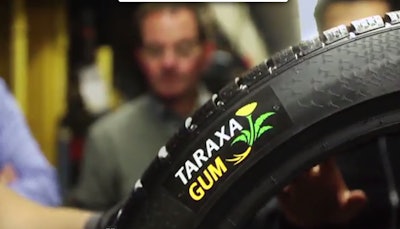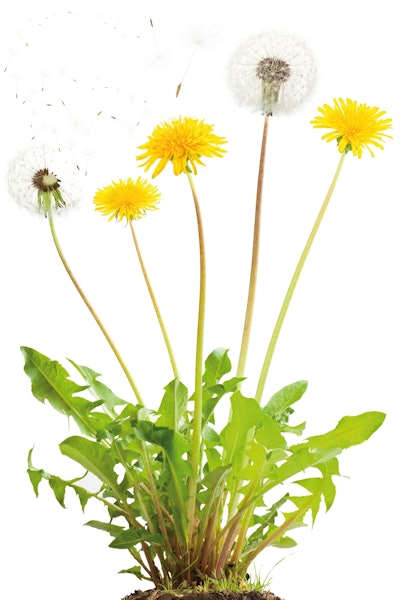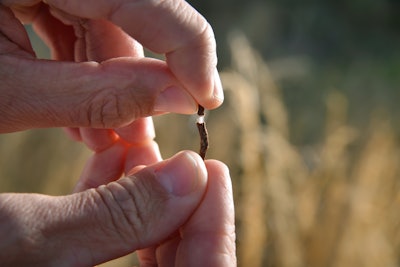
“Most people view dandelions as a nuisance. But here at Continental Tire, we embrace the flowering weed as a key component to the future of tires,” a Continental press release states.
“That’s right, in conjunction with The Fraunhofer Institute for Molecular Biology and Applied Ecology, Julius Kuehn-Institute, and EKUSA, Continental Tire has produced, and tested, the first tires where the tread is made 100 percent out of dandelion natural rubber as a polymer.”
Plans are in place to begin manufacturing consumer road tires made from dandelion-derived rubber in five to 10 years.
Between 10 and 30 percent of a car tire includes natural rubber, while truck tires can include proportionally higher amounts. Today, natural rubber is still obtained almost exclusively from the rubber tree (Hevea brasiliensis), which can only be cultivated in what is referred to as the “rubber belt” – a region near the equator and thus only a fraction of the world’s land surface.
Continental reports that global demand for natural rubber is set to rise in the next few years and meeting that demand will prove challenging.
 The growth cycle for the Russian dandelion is just one year, while it takes a rubber tree at least seven years to produce latex.
The growth cycle for the Russian dandelion is just one year, while it takes a rubber tree at least seven years to produce latex.The growth cycle of a rubber tree is roughly seven years before it can start producing latex that can be used in rubber production. This rubber made from this latex is key, as it has unique performance attributes that can’t be replicated in synthetic rubber. That means natural rubber is a must for tire production.
Consequently, market demand is outpacing production capacities, a situation that, in the past, has led to unpredictable price volatility, according to Continental.
Enter the dandelion. The team at Continental Tire looked to the plant as an alternative source of natural rubber.
Continental isn’t using just any old dandelion but a specific Russian species. This is the only dandelion that can be used as an alternative source for natural rubber production.
The roots of this dandelion species contain the natural rubber latex (the source for natural rubber used in tires), meaning supply will be steadier and easier to control, leading to greater price stability.
What’s more, the Russian dandelion species is much less sensitive to weather than the rubber tree.
“In agricultural terms, dandelions are an undemanding plant, growing in moderate climates, even in the northern hemisphere, and can be cultivated on land not suitable for food production,” according to Dr. Carla Recker, who heads the Continental team involved in the development of this super material. “This means that rubber production is conceivable near our tire factories, for instance, and the significantly shorter transport routes would also reduce CO2 emissions.”
Transporting rubber from South America or West Africa to North America and Europe for manufacturing is a long and costly journey that Continental says contributes significantly to the output of CO2. By consolidating this process in agricultural zones of the Americas and Europe, Continental states that the economic and carbon emissions benefits would be a significant boon to the tire industry.
The Russian dandelion can thrive in a large part of the world. Its growth cycle is approximately one year. Conversely, the rubber tree has a long life cycle, where the first harvest could start seven years after planting. Also of note, the dandelions Continental is working with were optimized without the use of genetic engineering.
So how close is Continental to making tires produced from dandelions available to consumers? Dr. Peter Zmolek has some insight.
“Our target is within the next five to 10 years,” said Zmolek, director of research and development of passenger and light truck tires for Continental Tire the Americas.
 The Russian Dandelion root contains natural rubber latex that is very similar to latex from the rubber tree.
The Russian Dandelion root contains natural rubber latex that is very similar to latex from the rubber tree.“In the summer of 2014, Taraxagum tires were produced and tested under summer and winter conditions on our proving grounds in Germany and Sweden. The results were very encouraging and our continued development efforts are on track.”
Tests so far demonstrate that the tire made from Taraxagum shows an equivalent “property profile” compared with tires made from conventional natural rubber.
While Continental is excited about using dandelions as a natural rubber source, the company reports that significant hurdles remain. For instance, synchronizing the agronomy process (planting, growing and harvesting) to continually changing demand presents a significant challenge.
Nevertheless, the team at Continental was recently able to extract several pounds of dandelion rubber from a small lab system to build the Taraxagum tires.











